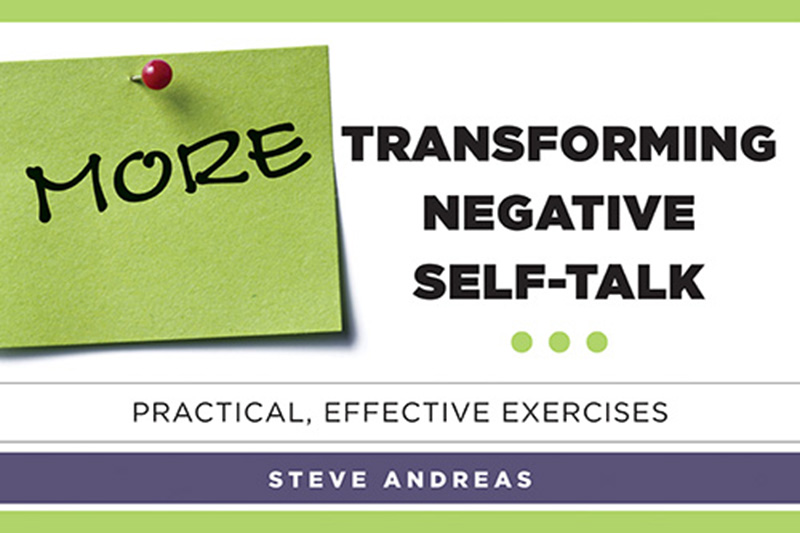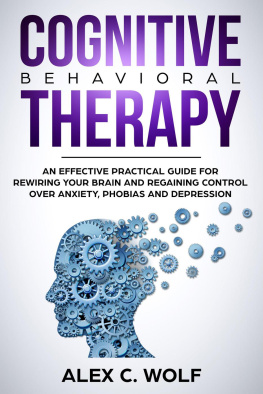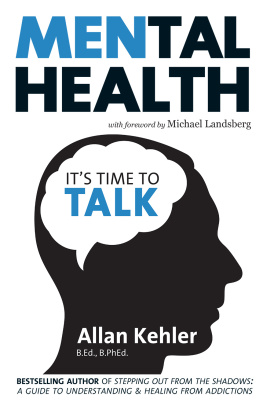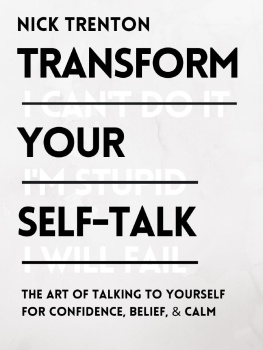
A verbatim transcript showing how to use this process appears in Chapter 8.
If you do this exercise by yourself, close your eyes and pause after reading each step of the instructions, so that you can fully reenter your experience of the previous step before doing what the instructions ask you to do next. You will have to open your eyes periodically to read the instructions for the next step, which will tend to interrupt your experiencing. It will be much easier, and the results will usually be better, if you have a friend who can read the instructions to you in a soft slow voice, and pause while you complete each step, so that you can focus completely on doing the process without interruption.
If a second friend is available, she or he can be a coach, following the outline along with the guide, making occasional suggestions to the guide, or to you directly, based on observation of the guides instructions, your responses, and the interaction between you.
1.Select voice. Remember a troublesome internal voice that has criticized you or your behavior in the present moment, reminded you of past failures or embarrassments, or foretold future failure, and so on....
2.Listen to the voice. Now listen carefully to the sound of this voicethe tonality, volume, tempo, hesitations, and so on, that you hearall the qualities that allow you to recognize someones voice on the phone instantly, out of all the thousands of voices you have heard....
3.Identify voice. Whose voice is this? Is it your voice or someone elses?...
If it is someone elses voice, go directly to step 4, below.
If it is your own voice, ask, Who did you learn from to talk in this way?...
If you cant identify the voice, ask, If you did know, who would it be? or Who does this voice remind you of?
4.Add image of person. As you hear this voice, see the person who is speaking to you, and watch all their facial movements, expressions, gestures, and so on, to find out what else you can learn about their experience as they talk to you....
5.See larger context. Now expand the scope of what you see and hear to include the larger context in both space and time. Where are you, and what just happened that this person is responding to? View this event in detail, including what happened earlier that was relevant to this event, and also what happened later as a result, in order to understand it more fully and completely....
6.Notice speakers limitations. Notice what that person was simply unable to do because of their upbringing, beliefs, frustrations, or other inadequacies or limitations. Realize that both what they said, and how they said it, may have had very little to do with you, and a great deal to do with their difficulty in communicating clearly and directly....
7.Clarify message. Would you please clarify your message? What would you say to me if you had been able to express yourself fully, and talk honestly about more of your experience of this situation? What is it that you really want me to hear?...
8.Give thanks for any clarification. Thank you for clarifying your communication....
If the communication is still unclear, ask againas many times as necessary, thanking the voice for each responseuntil the communication is clear to you.
9.Ask for the positive intent. What is your positive intent in telling me this? If the response doesnt appear to be positive, ask for the intent of this intent. Thank you. What is your positive intent in telling me that? You may need to ask several times before you receive an answer that you think is positive, and that you can agree with. Usually the positive intent is some kind of protection, either for you, the voice, or a third person or group of people....
10. Give sincere thanks for the positive intent. Thanks very much for telling me your positive intent....
Then ask, Would you be willing to consider communicating in a different way, so that it would be much easier for me to pay full attention to what it is that you want me to hear?...
Usually you will get a yes answer, because this proposed change supports the voices positive intent in communicating with you even better than what it had been doing. If you get a no answer, that means that there has been some miscommunication. Back up one or more steps and clarify the miscommunication before moving forward again....
11. Pause to examine the positive intent. Notice whether the positive intent was only for you, or for the person speaking to you, or for someone else, or some combination of these three basic alternatives.
12. List voices special abilities. Make a list of this persons special skills and abilities, and then compliment them. You are really good at ________ and ________.
13. Identify the skills that you learned. Go through the list you made and notice which of this persons skills you have learned, and give appreciation for what you have learnedeven if the process of learning it might have been unpleasant. I learned well from you how to ________ and ________. Thanks very much for teaching me that.
14. Identify the skills that you didnt learn. Again, go through the list you made and notice which of this persons skills you didnt learn, and give appreciation. You are also really good at ________ and ________, and I never learned how to do that well.
15. Ask if the voice would like to assist you. Would you be willing to assist me in situations where those skills would be useful to me?...
Assuming that it says yes, test by thinking of a past situation in which you could have used that kind of assistance, and find out what the voice says to you....
Assuming that goes well, imagine a future situation in which you might be able to use that kind of assistance, and find out what the voice says to you....
(Optional) If the voice is still somewhat difficult to listen to, and you would like to modify it so that it is more comfortable for you to hear, continue with the following steps.
16. Identify a trusted friend. Think of a special friend of yourseither in the present or in the pastof the same sex as the voice, who you know cares for you and has positive intentions, someone whom you would listen to carefully, no matter what she or he said....
If you cant find one, ask, If I did have such a trusted friend, what would that persons voice sound like?...
17. Listen to this friends voice. Listen to the qualities of this persons voiceits tonality, volume, tempo, hesitations, and so on, and particularly notice the unique qualities that distinguish this voice from all the other voices you have ever heard....
18. Adopt the tonality of the friends voice. Ask this voice that has been troubling you, Would you be willing to try using this voice of my trusted friend, whom I would listen to attentively no matter what it said? I am not suggesting taking away any old choices, only offering a new one. If I dont listen well, you can always go back to using the voice that you have used in the past....
If the voice doesnt agree to this, there must have been some misunderstanding at an earlier step; back up one or more steps to clarify this before going forward again.
19. Testing. Assuming that the troublesome voice agrees, ask, Please try out using that voice right now, to find out how well it works....
Assuming that it does so, notice how you respond differently, and thank the voice sincerely for being willing to make this change....
If you think it would be useful, ask the voice to make any further adjustments that youd like to make in how it speaks to you using your friends voice. For instance, if the voice is too loud, you could ask it to speak a bit more softly. Or perhaps youd like to adjust when it communicates with you, so that it talks to you before some activity, or afterward, but not during the activity because that would distract you from what you are doing, and so on....
Next page











